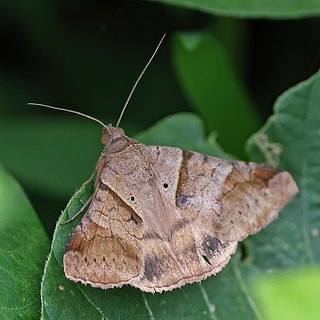
Mocis undata, the brown-striped semilooper, is a moth of the family Erebidae. The species was first described by Johan Christian Fabricius in 1775. It is found in the Afrotropical and Oriental regions, including India and Sri Lanka.

Grammodes geometrica is a moth found from the Mediterranean east to Oriental and Australasian tropics of India, Sri Lanka, Java and Australia. The adult is a fruit piercer. The species was first described by Johan Christian Fabricius in 1775.
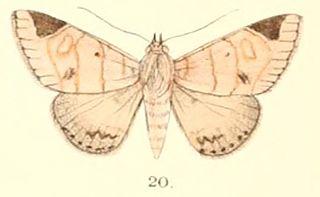
Dordura is a monotypic moth genus of the family Noctuidae erected by Frederic Moore in 1882. Its only species, Dordura aliena, was first described by Francis Walker in 1865. It is found in the Indian subregion, Sri Lanka, Myanmar, Thailand, Peninsular Malaysia, Sumatra, Borneo and New Guinea.

Hulodes caranea is a species of moth of the family Erebidae first described by Pieter Cramer in 1780. It is found from India, Sri Lanka, Myanmar, Java, Hong Kong to Queensland and New Guinea, it is also found on the Marianas and Carolines.

Pterocyclophora pictimargo is a moth of the family Noctuidae. It was first described by George Hampson in 1893 and it is found in Sri Lanka.

Ercheia cyllaria is a species of moth of the family Erebidae first described by Pieter Cramer in 1779. It is found in the Indian subregion, Sri Lanka, Taiwan, Japan, Indochina, Thailand, Peninsular Malaysia, Sumatra, Borneo, Seram and the Kai Islands.
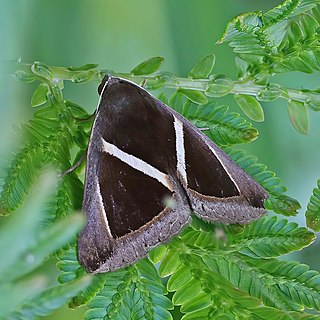
Chalciope mygdon, the triangular-striped moth, is a moth of the family Noctuidae. The species was first described by Pieter Cramer in 1777. It is found from the Oriental region to Sundaland.
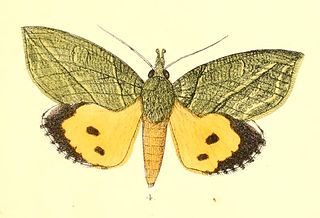
Eudocima hypermnestra is a moth of the family Erebidae described by Pieter Cramer in 1780. It is found in China, Thailand, Taiwan, India and Sri Lanka.

Chadisra bipars is a moth of the family Notodontidae. It was described by Francis Walker in 1862 and is found in the Indomalayan realm.

Cosmopterix abnormalis is a moth of the family Cosmopterigidae. It is known from the Cayman Islands, Haiti and Jamaica.
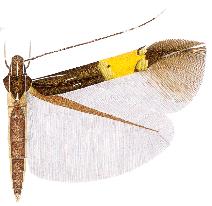
Cosmopterix ananke is a moth of the family Cosmopterigidae. It is known from the Federal District of Brazil.

Cosmopterix clandestinella is a moth of the family Cosmopterigidae. It is known from the United States.

Cosmopterix lespedezae is a moth of the family Cosmopterigidae. It is known from the United States.
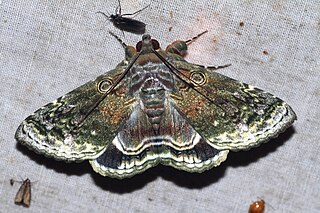
Cyclodes omma is a moth of the family Erebidae. It is found from the Oriental tropics to the Moluccas, including India, Nepal, Vietnam, Cambodia, Myanmar, Thailand, Malaysia, Java, Bali, Sumatra, Timor, Sri Lanka, Flores, Sulawesi, the Philippines, China and Taiwan.
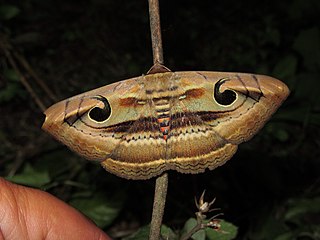
Spirama retorta, the Indian owlet-moth, is a moth of the family Erebidae. The species was first described by Carl Alexander Clerck in 1764. It is found in China, Korea, Japan (Honshu), India, Nepal, Bangladesh, Thailand, Cambodia, Myanmar, Vietnam, Taiwan, Sri Lanka, Malaysia, the Philippines (Luzon), Indonesia ,Japan.
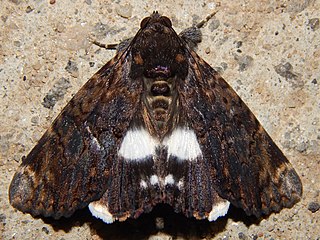
Nagia linteola is a species of moth in the family Erebidae first described by Achille Guenée in 1852. This species occurs in South Africa, the Democratic Republic of the Congo, Yemen, the Comoros, Mauritius, Madagascar, Indonesia (Borneo), India, Sri Lanka, Myanmar, Thailand and in Australia, where it has been recorded from Western Australia, the Northern Territory, Queensland and Victoria.
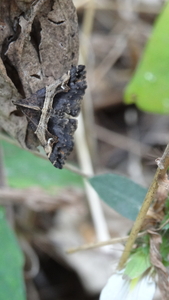
Bertula abjudicalis is a moth of the family Noctuidae first described by Francis Walker in 1859. It is found in India, Thailand, Laos, Vietnam, Taiwan and from Sri Lanka to Australia, where it has been recorded from New South Wales.
Drapetodes lunulata is a moth in the family Drepanidae. It was described by Warren in 1896. It is found in Indonesia (Java).
Habrona marmorata is a moth in the family Drepanidae. It is widely distributed in Papua and Papua New Guinea.
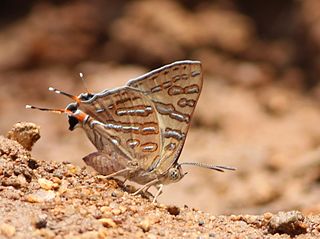
The Common shot silverline, Cigaritis ictis, is a species of lycaenid butterflies. It is native to India and Sri Lanka. The Sri Lankan population is classified as a subspecies: Cigaritis ictis ceylonica(Felder, 1868).















